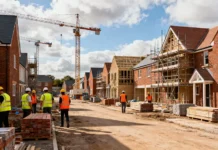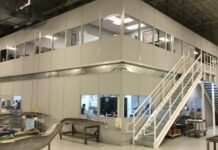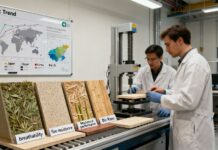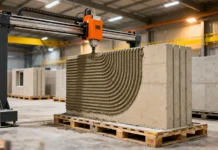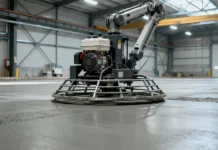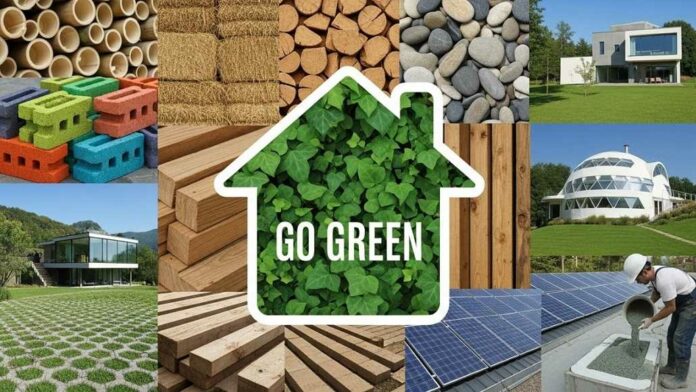The construction industry confronts an environmental reckoning that demands immediate and comprehensive transformation. With buildings responsible for 39% of global energy-related carbon emissions and construction activities consuming approximately 3 billion tonnes of raw materials annually, the sector’s environmental footprint has reached unsustainable proportions. This critical juncture has catalyzed an unprecedented shift toward sustainable building materials that promise to revolutionize construction practices while addressing urgent climate concerns.
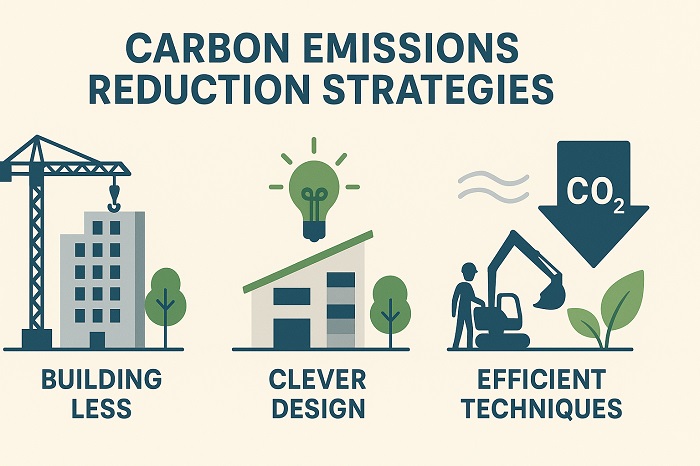
Modern construction faces a dual challenge: meeting growing infrastructure demands while dramatically reducing environmental impact. The United Nations projects that global building stock will double by 2050 as populations approach 10 billion, potentially consuming a substantial portion of the remaining carbon budget. This expansion trajectory makes the adoption of sustainable building materials not merely beneficial but essential for planetary survival and regulatory compliance.
The Paradigm Shift Toward Natural and Renewable Materials
Cross-laminated timber (CLT) has emerged as a revolutionary alternative to concrete and steel, offering structural integrity while providing carbon sequestration benefits. Unlike traditional materials that contribute to emissions, CLT actively removes carbon dioxide from the atmosphere during the timber’s growth phase, creating carbon-negative construction solutions. The material’s prefabricated nature reduces construction timelines and minimizes on-site waste, while its lightweight properties facilitate efficient transportation and installation.
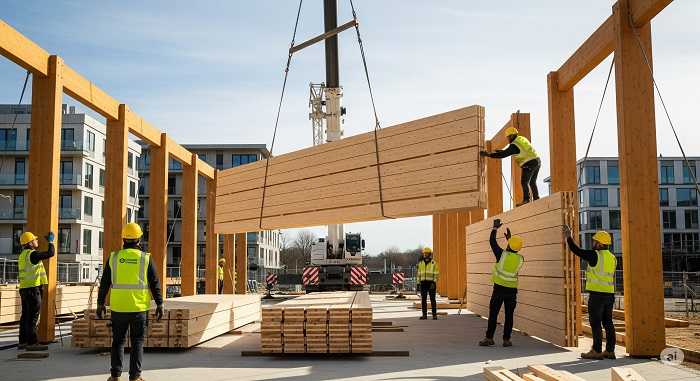 CLT’s structural capabilities rival those of conventional materials, supporting heavy loads and enabling multi-story construction without compromising safety standards. The material’s fire resistance, achieved through char formation that protects the inner wood structure, has been validated in extensive testing protocols. Major urban developments in London and other metropolitan areas increasingly specify CLT for modular construction projects, demonstrating its viability in high-density environments.
CLT’s structural capabilities rival those of conventional materials, supporting heavy loads and enabling multi-story construction without compromising safety standards. The material’s fire resistance, achieved through char formation that protects the inner wood structure, has been validated in extensive testing protocols. Major urban developments in London and other metropolitan areas increasingly specify CLT for modular construction projects, demonstrating its viability in high-density environments.
Bamboo represents another transformative natural material gaining prominence in sustainable construction applications. This rapidly renewable resource achieves maturity in just three to five years, compared to decades required for traditional hardwoods. Bamboo’s tensile strength rivals that of steel while maintaining exceptional flexibility that enables structures to withstand seismic activity and extreme weather conditions.
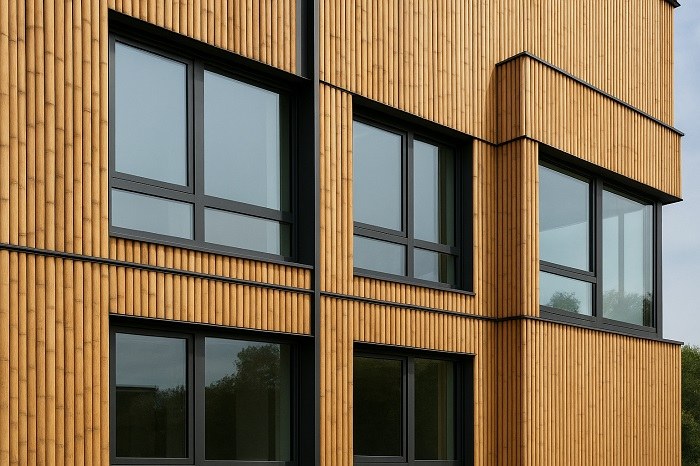 The cultivation and harvesting of bamboo demonstrate remarkable sustainability characteristics, requiring minimal water, pesticides, or fertilizers while preventing soil erosion through extensive root networks. Its continuous carbon sequestration throughout rapid growth cycles positions bamboo as a critical tool for climate change mitigation. Modern architectural applications extend from structural elements including beams and columns to aesthetic applications such as flooring and wall paneling.
The cultivation and harvesting of bamboo demonstrate remarkable sustainability characteristics, requiring minimal water, pesticides, or fertilizers while preventing soil erosion through extensive root networks. Its continuous carbon sequestration throughout rapid growth cycles positions bamboo as a critical tool for climate change mitigation. Modern architectural applications extend from structural elements including beams and columns to aesthetic applications such as flooring and wall paneling.
Bio-Composite Innovations Reshaping Construction
Hempcrete represents a groundbreaking bio-composite material that combines hemp hurds with lime binders to create lightweight, non-load-bearing insulation with exceptional environmental benefits. This innovative material demonstrates negative carbon footprint characteristics, as hemp cultivation absorbs substantial quantities of CO₂ while the lime binder undergoes carbonation processes that sequester additional carbon throughout the material’s lifespan.
The thermal performance characteristics of hempcrete surpass those of traditional insulation materials, providing excellent temperature regulation while maintaining optimal humidity levels within building envelopes. Its fire-resistant properties, derived from high silica content, eliminate the need for chemical flame retardants while ensuring occupant safety. The material’s lack of brittleness eliminates expansion joint requirements, simplifying construction processes and reducing long-term maintenance needs.
Hemp’s minimal resource requirements during cultivation make it an ideal sustainable crop, thriving without irrigation, pesticides, or synthetic fertilizers. The entire plant can be utilized in construction applications, from structural elements to insulation materials, minimizing waste and maximizing resource efficiency. Regulatory frameworks increasingly recognize hemp-based materials as viable alternatives to conventional construction products, facilitating broader market adoption.
Circular Economy Materials and Waste Reduction
Recycled steel exemplifies the circular economy principles transforming construction material sourcing and utilization. Approximately 40% of global steel production currently incorporates recycled content, demonstrating the material’s infinite recyclability without quality degradation. Steel buildings can be almost entirely recycled at end-of-life, with recovered materials maintaining equivalent strength and durability characteristics to virgin steel.
The energy savings associated with recycled steel production are substantial, requiring significantly less energy than primary steel manufacturing while reducing demand for raw iron ore extraction. Construction projects utilizing recycled steel contribute to resource conservation while maintaining structural performance standards that meet or exceed industry requirements. The material’s consistent quality ensures that recycled steel performs identically to virgin steel in construction applications.
Recycled plastic materials are finding innovative applications in construction, leveraging their water resistance, corrosion immunity, and thermal insulation properties. While lacking the structural strength of steel or timber, recycled plastic can be combined with other materials to create composite products suitable for various construction applications. These materials are being utilized to manufacture lumber, fencing, floor tiles, roofing materials, and even concrete aggregates.
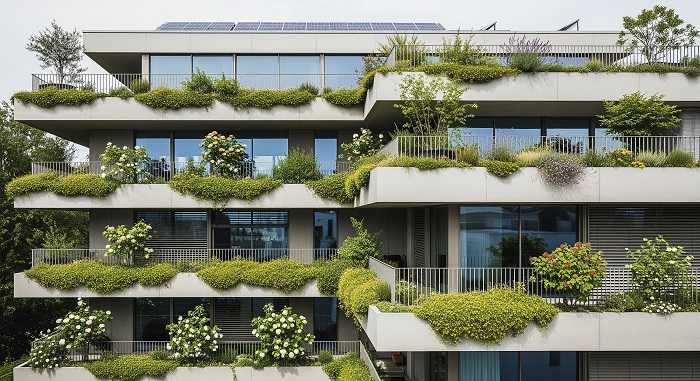
Advanced Sustainable Technologies and Materials
Rammed earth construction techniques, refined through thousands of years of application, are experiencing renewed interest as sustainable building practices gain prominence. This ancient method involves compacting mixtures of aggregates, clay, and sand within formwork to create durable walls that can last centuries with minimal maintenance. The technique utilizes locally sourced materials, reducing transportation emissions while creating structures with excellent thermal mass properties that naturally regulate interior temperatures.
Cork emerges as an innovative sustainable material with diverse construction applications, from insulation and flooring to roofing and wall coverings. Unlike conventional harvesting that requires tree removal, cork is obtained by stripping bark from living trees, allowing continued growth and carbon sequestration. The material’s cellular structure enables natural carbon storage while its lightweight and soft characteristics facilitate easy installation and manipulation during construction.
Straw bale construction offers exceptional insulation properties, providing thermal resistance values three times greater than traditional insulation materials. The technique involves binding straw bales with bamboo or timber to create structural walls that are completely biodegradable and possess very low embodied energy. Properly maintained straw bale structures can endure for over a century while providing superior energy efficiency throughout their operational lifespan.
Regulatory Frameworks and Certification Systems
The evolution of green building certification systems reflects the construction industry’s commitment to sustainable practices and materials adoption. BREEAM and LEED standards are undergoing significant updates by mid-2025, with stricter performance thresholds for energy efficiency, carbon reduction, water conservation, and sustainable material utilization. These enhanced requirements will push developers toward greener practices while creating market demand for innovative sustainable materials.
Environmental Product Declarations (EPDs) have become essential tools for material transparency, providing standardized assessments of lifecycle environmental impacts including carbon emissions, water usage, and resource depletion. These documentation requirements enable informed decision-making while building confidence in sustainable alternatives among architects, engineers, and regulatory authorities.
The UK government’s commitment to net-zero emissions by 2050 continues driving regulatory changes that favor sustainable construction materials. Building Regulations updates targeting Part B, F, and O reflect this trajectory, with enhanced requirements for fire safety, ventilation, and overheating prevention that often favor natural and sustainable materials. The built environment’s contribution of approximately 40% to UK emissions necessitates dramatic improvements in material selection and construction practices.
Economic Dynamics and Market Transformation
The economic landscape surrounding sustainable building materials reveals complex interactions between initial costs, lifecycle benefits, and regulatory compliance requirements. While sustainable materials often command premium prices initially, their superior durability, reduced maintenance needs, and energy efficiency frequently result in lower total ownership costs. Buildings incorporating sustainable materials typically demonstrate reduced energy consumption, with associated utility savings offsetting initial material premiums over time.
Government incentives and procurement policies increasingly favor projects utilizing sustainable materials, creating market conditions that support premium pricing for environmentally beneficial alternatives. The UK’s carbon pricing mechanisms through emissions trading schemes add financial pressure to carbon-intensive materials while making low-emission alternatives more economically attractive. These policy interventions effectively internalize environmental costs, shifting market dynamics toward sustainable solutions.
Innovation Trajectories and Future Development
Three-dimensional printing technologies are revolutionizing sustainable material applications, enabling precise component manufacturing with minimal waste generation. These additive manufacturing processes can utilize recycled plastics and low-carbon concrete formulations to create complex architectural elements that were previously difficult or expensive to produce through conventional methods. The technology reduces construction time and labor costs while enabling innovative designs that optimize material usage and structural performance.
The integration of smart technologies with sustainable materials creates new opportunities for performance optimization and lifecycle management. Digital monitoring systems can track material performance, predict maintenance requirements, and optimize building operations to maximize the environmental benefits of sustainable material investments. These technological convergences promise to accelerate sustainable material adoption while improving overall project outcomes.
Regional customization of sustainable materials is emerging as manufacturers adapt products to local climate conditions, material availability, and cultural preferences. This localization strategy reduces transportation emissions while optimizing material performance for specific environmental conditions. The approach supports local economies while building resilience in supply chains that support sustainable construction practices.
Global Impact and Industry Transformation
The transformation toward sustainable building materials represents a fundamental shift in construction industry values and practices. European initiatives demonstrate the sector’s potential for change, with recycled materials accounting for 18% of construction inputs in Europe and continuing to grow. This progression reflects both regulatory pressure and market recognition of sustainable materials’ benefits across multiple performance dimensions.
Workforce development programs increasingly emphasize sustainable construction techniques and materials knowledge, recognizing that industry transformation requires skilled professionals capable of implementing new technologies and approaches. Gender diversity initiatives in green construction leadership roles aim to bring diverse perspectives to sustainability challenges while building inclusive pathways for industry advancement.
The construction industry’s transformation through sustainable building materials extends beyond environmental benefits to encompass economic resilience, social equity, and technological innovation. As regulatory frameworks tighten and market demand intensifies, companies embracing sustainable materials position themselves for long-term success while contributing to global climate objectives. The evidence overwhelmingly supports sustainable materials as superior alternatives that deliver enhanced performance across environmental, economic, and social dimensions, making their widespread adoption inevitable and essential for industry survival and planetary health.




